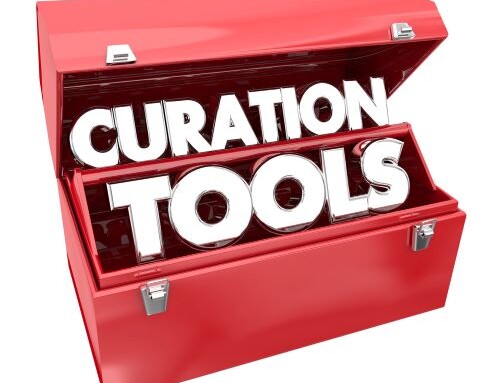Mistakes can be costly especially if you’re planning a travel incentive program in-house. Ultimately oversights can cost your business time and money. Consider the ten most common travel incentive program mistakes:
Ambiguous Goals
You can’t hit a target that you can’t see. If the goal of your program is to simply “increase sales” or “gain more new customers” it is not exacting enough to monitor, track and measure results. Rather than having ambiguous goals, consider by how much you want to do things like reducing costs, improving productivity, increasing revenue and then determine a very specific measure. For example: “Increase revenue by 10% within the next 18 months.” This goal should be what drives the incentive program.
Reward Criteria is Too Narrow or Too Broad
No incentive program can succeed if the criteria for winning are too narrow. Participants must feel like they actually stand a chance of reaching and succeeding. If they think the goal is unattainable, they won’t have incentive to try. At the same time, you don’t want the criteria to be too broad. Winning should require hard work. The key is to balance realistic objectives with ones that encourage participants to stretch to win.
Participants Aren’t Involved in Reward Selection
In order for a travel incentive program to provide a true incentive, the travel opportunity must be desirable to the participants. This is not the same as planning a program where the participants have no interest but someone else does (e.g. the person planning the program, managing the program or the powers-that-be within the organization). For this reason, the destination must be something that will appeal to your employees. Get input from your workers. What kind of experience would motivate them? What have been their travel experiences in the past and how can you create a unique experience that will be new, different and enticing? The best program rewards will appeal to your employee demographic. For example: Senior level executives may expect a very different experience than employees earning a moderate income.
Insufficient Awareness
You can have a real knock-out destination, but it won’t do any good if the majority of employees aren’t aware there’s an incentive program going on. Incentive programs need to be promoted – and small recognitions made as it progresses. You don’t want participants to forget about it after a few weeks, and you don’t want enthusiasm to die down. Keep employees updated on their progress, praise milestones, and continue to showcase the destination, venue, and activities you’ve chosen.
Lack of Competition
Competition can be a great asset, especially for salespeople. Without it, your sales team may grow stagnant. A lack of competition will make it less likely that a sufficient number of participants meet the criteria for winning. Promoting a healthy competition, and encouraging each worker to try and be the best, will work in your program’s favor.
Ignoring the Needs of Participants
Participants should be involved early in the process. Not only does this assist with buy-in but can help refine the options for the final destination. There are a lot of different factors to consider; for example, will married individuals be as likely to pursue a trip that doesn’t include their spouse? Or how about the trip length? A longer trip may be appealing to many, but it would also mean more time without getting any work done, or placing extra burden on those who aren’t winners. A short trip would help keep winners from being behind on work when they return, but a two-day affair might not be a sufficient amount of time to motivate participants. These are important considerations, and you can only resolve such questions by talking with the relevant employees.
Lack of Crisis Planning and Backup Plans
Regardless of how well you plan, there’s always a chance that something will go wrong. In the event of a crisis, you’ll want to have already considered backup plans. For example, what will you do if your group’s flight gets cancelled? Venue issues should be another consideration. If your hotel undergoes renovations that aren’t finished by the time of your stay, will they help you make other arrangements? Planning a program without backup plans and crisis management considerations will set you up for failure.
Unmonitored Progress
When it comes to incentive programs, management must manage employee progress, expectations, and morale. It doesn’t do much good to implement a program and then step away for the entirety of the program. It’s much more effective to monitor and encourage progress, since this boosts morale and keeps the incentive in the forefront of your employees’ considerations. Additionally, regular monitoring can help identify possible performance laggards so that they can get the extra help they may need to improve performance whether or not they will become winners, ultimately helping to achieve the bigger goal of the incentive program.
Budget Errors
Budgeting for a travel incentive can be tricky. Some organizations plan a budget of 3-5% of each winner’s annual income. In other cases, organizations have budgets which can range from $2000-4000 per participant based upon industry averages. If you need help planning your budget, this resource can be helpful.
Unrealistic Deadlines
It’s hard to do quality work when you feel rushed. If participants don’t have enough time to meet the reward’s requirements, they may not try very hard. They need the time to work their way toward the goal, with the confidence that they really do stand a chance of success. Consider talking to your employees in order to create a realistic timeframe that is neither too challenging nor too easy.
Non-cash incentives can be a valuable method to achieve longer-term business objectives but they require careful and thoughtful planning. For more information about planning travel as an incentive contact Gavel International.
- The 10 Critical Keys to Ensure Successful Leadership - February 25, 2020
- The Cure for Boring Meetings in the Healthcare Industry - September 26, 2019
- How to Spot Ineffective Meetings (and How to Stop Them) - September 12, 2019







